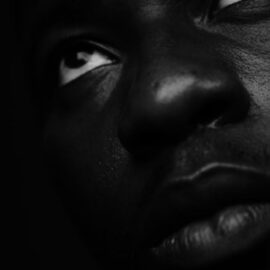

This article is an excerpt from the Shortform summary of "The Hiding Place" by Corrie ten Boom. Shortform has the world's best summaries of books you should be reading.
Like this article? Sign up for a free trial here .
Who was Pickwick in The Hiding Place? How did he help connect the ten Booms to resources for their secret operations?
Pickwick was a Haarlem man named after the Pickwick Papers. He was well-known in the community and Corrie was surprised to see he was the leader of the Resistance.
Read about Pickwick, The Hiding Place, and efforts to make a safe place in the Beje.
First Appearance of Pickwick in The Hiding Place
One afternoon in 1937, when Corrie was 45 years old, the ten Booms held a party to celebrate the 100th anniversary of their family watch shop, started by Corrie’s grandfather, Willem, in 1837.
The entire extended family, as well as the ten Booms’ Haarlem friends, neighbors, and business associates, came out to the Beje. Nollie, along with her husband and six children, were there, as well as Willem and his family. Corrie remembered Betsie’s grace, beauty, and vivacity on this day. Betsie, Corrie recalled, seemed to have an uncanny gift for creating beauty all around her.
Corrie would recall this day of celebration as one of the best and proudest of her life.
The entire Haarlem community showed up to toast the ten Boom family, including fellow congregants at their church, St. Bavo’s, as well as business associates, suppliers, customers, and even competitors. Also in attendance was a man Corrie and Betsie called “Pickwick,” a nickname he earned because of his resemblance to the sketch drawings in Charles Dickens’s Pickwick Papers. Although physically unattractive, Pickwick was benevolent and cheerful—Corrie remembered how he always used to amuse children by balancing teacups on his protruding belly.
The Resistance
One night after the curfew, Corrie’s nephew Kik (Willem’s son) took her to a home in the fashionable suburb of Aerenhout, journeying by bicycle. There, she was introduced to the local leaders of the underground. She was shocked to discover that the head of the Haarlem Resistance was none other than Pickwick! As she went around the room and met the other leaders, she saw that no one gave their real names. The organization was committed to anonymity.
They briefed her on the organization’s purpose—the Resistance existed to assist the Allied forces by sharing intelligence about German armed forces’ movements and positions. But they were instantly sympathetic with Corrie’s effort to rescue Jews and offered her their resources, knowledge, and contacts to help her expand and solidify her operation. They also shared some good news: Peter was about to be released!
Pickwick welcomed Corrie to the Resistance, but he warned her that the consequences would be severe if she was ever caught. He told her that it was better that she did not know anyone’s real name, so that she would not be able to reveal anyone’s identity if she were apprehended and interrogated.
The organization impressed upon Corrie the need to make sure that her safehouse was truly safe. The place in her home where Jews were hiding needed to be totally undetectable, with everyone at the Beje knowing exactly what to do in the event of a sudden raid by the Gestapo. Pickwick knew that the Beje lacked a secret room—he told Corrie this needed to be addressed immediately. With help from Pickwick, the hiding place became much safer.
Taking Extra Precaution
At its peak in 1943-44, the Beje hiding place was home to six Jews who lived there on a permanent basis, along with Corrie, Betsie, and Casper. But because it was now functioning as a permanent safehouse instead of a temporary refuge, the leaders of the Dutch Resistance began to demand that Corrie tighten her operation and instill more strict discipline at the Beje.
For Pickwick, the hiding place was insufficient. He was dismayed to learn that Corrie had not taken some basic precautions to protect herself, the Jews living in her home, or her wider circle of accomplices in the increasingly likely event that the home was raided by the Gestapo. He insisted that Corrie hold regular drills—she needed to make sure that all six Jews were able to get into the hiding place from wherever they happened to be in the house in under one minute.
According to Pickwick, the hiding place was only part of it. They needed to be able to do this without leaving behind any trace that they had been there. The Gestapo, Pickwick warned, would be thorough in checking a suspected safehouse for any signs that additional people were living there. Even seemingly innocuous things like left-behind ashtrays, overfilled wastebaskets, or a warm spot on an empty bed could arouse their suspicions.
He also told Corrie that she needed to implement an alarm and warning system. As explained by Pickwick, the hiding place would be safer because this would alert the six fugitives that the Germans were on their way and that they needed to make their way to the hiding place in Corrie’s room immediately. With encouragement from Pickwick, the hiding place got a buzzer system that could be pressed if the Beje was tipped off about an incoming raid—the buzzer was installed at strategic points throughout the house and was loud enough to be heard from anywhere inside, but not outside. Whoever answered the door would have to stall the officers as long as possible, to allow the refugees as much time as possible to escape.

———End of Preview———
Like what you just read? Read the rest of the world's best summary of Corrie ten Boom's "The Hiding Place" at Shortform .
Here's what you'll find in our full The Hiding Place summary :
- Why devout Christian Corrie ten Boom decided to stand up to the Nazi occupation
- How ten Boom and the Jewish neighbors she was hiding were caught
- How ten Boom survived the concentration camp and left with even stronger faith






